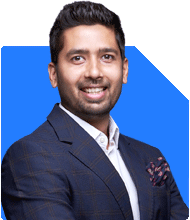Ramalingam Kalirajan |8541 Answers |Ask -Follow
Mutual Funds, Financial Planning Expert - Answered on Apr 29, 2024
He has an MBA in finance from the University of Madras and is a certified financial planner.
He is the director and chief financial planner at Holistic Investment, a Chennai-based firm that offers financial planning and wealth management advice.... more

I retired earlier now at 53. Invested 7L in ELSS and using 60L on short term equity trading (with monthly average gain 2L) and having own apartment home worth 40L. Having dependent widowed mother, wife with 13 yrs old daughter. Intended to raise daughter as doctor. Please suggest better investment options.
Reduce Risk in Short-Term Equity Trading:
While a ?2 lakh monthly gain from short-term trading sounds impressive, it's a very risky strategy. The market can be volatile, and these gains may not be sustainable. Consider allocating a much smaller portion (maybe 10-20%) to short-term trading and focus on more stable options for the majority of your investable assets (?60 lakh currently in trading).
Focus on Long-Term Growth and Stability:
Increase Investment in ELSS: ?7 lakh is a good start, but for your daughter's education and your retirement needs, you'll likely need a much larger corpus. Consider increasing your SIP amount in ELSS or similar diversified equity mutual funds with a long-term horizon (10+ years).
Explore Debt Options for Regular Income:
You mentioned having a dependent mother and daughter's education to plan for. Consider investing a portion (maybe 20-30%) of your investable amount in safer debt options like Public Provident Fund (PPF), Senior Citizen Savings Scheme (SCSS) for your mother (if she's above 60), or fixed deposits to generate a regular income stream.
Plan for Daughter's Education:
Doctorate studies can be expensive. Start an SIP in a dedicated child education plan or invest in aggressive equity funds specifically for this goal. Talk to a Certfied Financial Planner for personalized recommendations based on the estimated cost of medical education.
Utilize Your Apartment:
While your apartment fulfills your housing needs, consider if it could generate additional income. Explore options like renting a room if feasible.
Seek Professional Guidance:
Given your multiple financial goals and risk tolerance, consulting a Certified Financial Planner (CFP) can be highly beneficial. They can create a personalized investment plan considering your risk appetite, time horizon, and financial goals.
You may like to see similar questions and answers below
Omkeshwar Singh | Answer |Ask -Follow
Head, Rank MF - Answered on Jul 21, 2022
Kirtan A Shah |77 Answers |Ask -Follow
MF Expert, Financial Planner - Answered on Nov 01, 2023
Sunil Lala | Answer |Ask -Follow
Financial Planner - Answered on Nov 05, 2023
Ramalingam Kalirajan |8541 Answers |Ask -Follow
Mutual Funds, Financial Planning Expert - Answered on May 18, 2024
Ramalingam Kalirajan |8541 Answers |Ask -Follow
Mutual Funds, Financial Planning Expert - Answered on Jun 21, 2024
Dr Nagarajan J S K |472 Answers |Ask -Follow
NEET, Medical, Pharmacy Careers - Answered on May 28, 2025
Ramalingam Kalirajan |8541 Answers |Ask -Follow
Mutual Funds, Financial Planning Expert - Answered on May 28, 2025
Dr Nagarajan J S K |472 Answers |Ask -Follow
NEET, Medical, Pharmacy Careers - Answered on May 28, 2025
Dr Nagarajan J S K |472 Answers |Ask -Follow
NEET, Medical, Pharmacy Careers - Answered on May 28, 2025
Radheshyam Zanwar |2425 Answers |Ask -Follow
MHT-CET, IIT-JEE, NEET-UG Expert - Answered on May 28, 2025
Dr Nagarajan J S K |472 Answers |Ask -Follow
NEET, Medical, Pharmacy Careers - Answered on May 28, 2025
Dr Nagarajan J S K |472 Answers |Ask -Follow
NEET, Medical, Pharmacy Careers - Answered on May 28, 2025
Radheshyam Zanwar |2425 Answers |Ask -Follow
MHT-CET, IIT-JEE, NEET-UG Expert - Answered on May 28, 2025
Radheshyam Zanwar |2425 Answers |Ask -Follow
MHT-CET, IIT-JEE, NEET-UG Expert - Answered on May 28, 2025
Radheshyam Zanwar |2425 Answers |Ask -Follow
MHT-CET, IIT-JEE, NEET-UG Expert - Answered on May 28, 2025






















